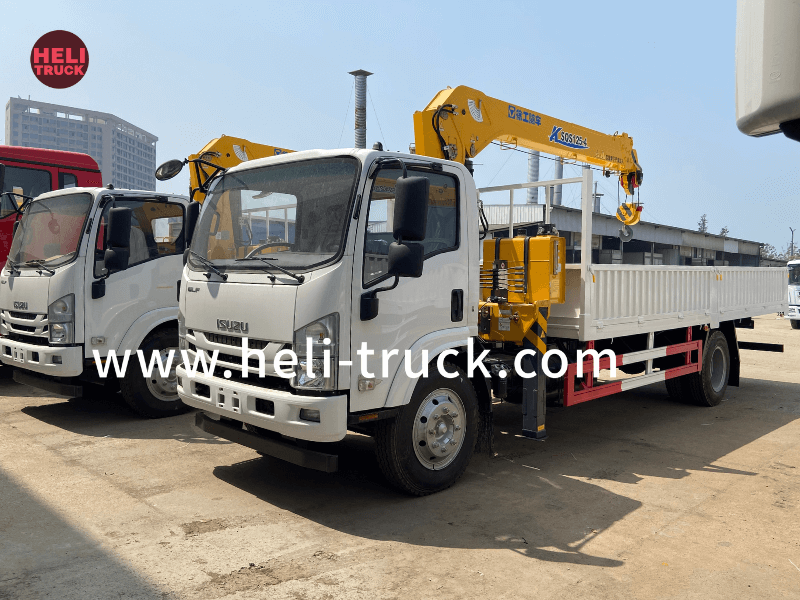Introduction
Garbage compactor trucks play a crucial role in waste management, helping to keep cities and communities clean and hygienic. However, operating these trucks can pose significant risks to the safety of workers, pedestrians, and other road users. Therefore, it is essential to equip garbage compactor trucks with robust safety features to minimize the potential for accidents and injuries. In this article, we will explore the various safety features available in modern garbage compactor trucks and examine how these features enhance safety for both operators and the public.

1. Rearview Cameras and Sensors
One of the most critical safety features in garbage compactor trucks is the inclusion of rearview cameras and sensors. These devices provide operators with a clear view of the area behind the truck, helping to eliminate blind spots and reduce the risk of accidents when reversing. Rearview cameras offer a real-time visual feed of the truck's surroundings, while sensors can detect obstacles or individuals in the truck's path, alerting the operator to potential hazards. These features are particularly crucial in urban environments where there may be limited space for maneuvering the truck.
2. Automatic Braking Systems
Another important safety feature in garbage compactor trucks is the inclusion of automatic braking systems. These systems are designed to detect obstacles or pedestrians in the truck's path and automatically apply the brakes to prevent collisions. Automatic braking systems can significantly reduce the risk of accidents, particularly in situations where the operator may not have sufficient time to react to a potential hazard. Additionally, these systems can help mitigate the impact of human error, providing an added layer of safety for both the operator and the public.
3. Emergency Stop Buttons
Garbage compactor trucks are equipped with emergency stop buttons that allow operators to quickly halt the operation of the compactor in case of an emergency. These buttons are strategically located within easy reach of the operator and are designed to immediately shut down the compaction process, preventing accidents or injuries that may occur if an operator becomes trapped or entangled in the machinery. Emergency stop buttons are a crucial safety feature that can help protect the well-being of operators and prevent serious accidents in the event of a malfunction or operator error.
4. Overload Protection Systems
To ensure the safe operation of garbage compactor trucks, overload protection systems are often integrated into the design of these vehicles. These systems are designed to monitor the weight and pressure exerted on the compactor, preventing overloading that could compromise the structural integrity of the truck or lead to equipment failure. Overload protection systems can also alert operators to potential issues related to excessive waste accumulation, allowing them to take appropriate action to avoid overloading the truck.
5. Rollover Protection
Given the size and weight of garbage compactor trucks, the risk of rollover accidents is a significant concern. To address this risk, modern garbage compactor trucks are equipped with rollover protection features, including reinforced cab structures, stability control systems, and roll bars. These features are designed to minimize the likelihood of rollover accidents and provide added protection for the operator in the event of a rollover incident. Rollover protection features are essential for ensuring the safety of garbage compactor truck operators, particularly when navigating uneven or challenging terrain.
6. High-Visibility Lighting and Signage
Enhancing the visibility of garbage compactor trucks is essential for ensuring the safety of both operators and pedestrians. High-visibility lighting, including bright LED headlights, taillights, and hazard lights, helps to make the truck more visible to other road users, particularly in low-light conditions. Additionally, the inclusion of reflective signage and markings on the truck's exterior can further enhance its visibility, reducing the risk of collisions and improving overall safety on the road.
7. Operator Training and Safety Protocols
While not a physical safety feature, operator training and safety protocols are critical components of ensuring the safe operation of garbage compactor trucks. Proper training equips operators with the knowledge and skills necessary to operate the truck safely, including understanding the function of safety features and emergency procedures. Additionally, implementing and enforcing safety protocols, such as wearing personal protective equipment and adhering to operational guidelines, can help mitigate the risk of accidents and injuries associated with the operation of garbage compactor trucks.
Conclusion
Garbage compactor trucks are essential for maintaining clean and sanitary urban environments, but their operation presents inherent safety risks. By incorporating robust safety features, such as rearview cameras, automatic braking systems, emergency stop buttons, overload protection systems, rollover protection, high-visibility lighting, and operator training, manufacturers and operators can enhance the safety of these vehicles. These safety features not only protect the well-being of operators but also contribute to the overall safety of pedestrians and other road users. As water tank truck continues to advance, it is crucial for the waste management industry to stay abreast of the latest safety innovations and integrate them into the design and operation of garbage compactor trucks.
